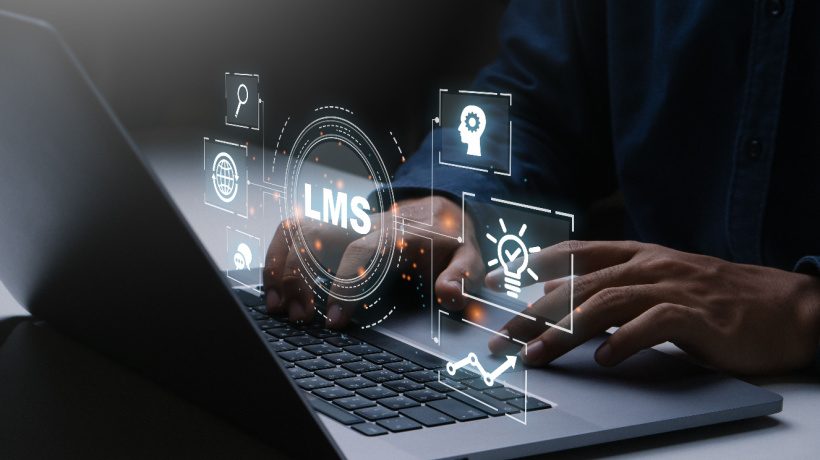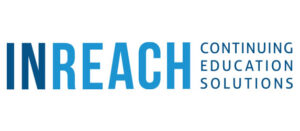Key LMS Features That Empower Learning
Each of the key features below plays a crucial role in the effectiveness, efficiency, and flexibility of a Learning Management System (LMS). Let's go through each one and understand why they are important.
11 Key Features Of An Effective LMS
1. Learning Management
This feature serves as the backbone of an LMS. It helps administrators organize and automate education and training activities. Managing user information, scheduling, alerts, and content delivery streamline the learning process. Allowing self-enrollment and setting prerequisites ensures that learners can access the appropriate courses and materials, fostering a personalized learning experience.
2. Content Development
Creating engaging and informative course content is essential for effective learning. Authoring tools enable organizations to design courses using various multimedia elements. This customization allows tailoring content to specific needs, enhancing learner engagement and knowledge retention.
3. Content Library
Pre-made learning materials in a content library save time and resources. Organizations can provide a range of topics, ensuring a well-rounded learning experience. This feature can be particularly beneficial for addressing mandatory training requirements as it offers readily available resources.
4. Employee Training
Having a dedicated customer success representative ensures that administrators and learners can make the most of the LMS. Proper training on platform utilization, content customization, and other features ensures a smoother learning experience and reduces the learning curve.
5. SCORM Compliance
SCORM compliance enables seamless integration of third-party content. This is important because it allows organizations to incorporate external resources and materials without the need for extensive reformatting or coding.
6. Asynchronous Learning
Allowing learners to access course materials at their own convenience is a key advantage of an LMS. Learners can manage their time effectively, which is crucial for busy professionals or those in different time zones. Setting deadlines encourages accountability and completion.
7. Synchronous Learning
Synchronous learning fosters real-time collaboration among learners. It's particularly valuable for group discussions, interactive activities, and immediate feedback. However, coordinating schedules can be challenging, especially for organizations with diverse time zones.
8. Mobile Learning
In a world where mobile devices are ubiquitous, providing access to learning materials via mobile apps or web browsers is essential. This feature accommodates remote learners and professionals on the move, ensuring continuous learning regardless of location.
9. Testing And Assessments
Assessments gauge learners' understanding and retention of content. Regular tests and quizzes validate the effectiveness of the learning process. Analytical tools offer insights into learners' strengths and areas that need improvement.
10. Certification And Compliance Management
In regulated industries, tracking employee certification and compliance training is crucial for legal and safety reasons. This feature simplifies the process of ensuring that employees meet necessary requirements and provides a clear record for auditing purposes.
11. Performance Tracking
Measuring the success of the learning program is vital. Performance-tracking tools provide data on learners' progress and engagement, enabling organizations to assess the effectiveness of the LMS and make informed improvements.
Examining The Importance Of These Essential Features
The amalgamation of these features within a Learning Management System (LMS) constructs a dynamic and comprehensive learning ecosystem that is responsive to the diverse needs of learners and organizations. Collectively, these attributes facilitate an efficient and engaging learning experience.
The LMS's core component, the learning management feature, acts as a central hub for education and training endeavors. By orchestrating user data, scheduling, content dissemination, and enrollment procedures, it streamlines learning pathways and encourages a personalized approach through self-enrollment and prerequisites. Crafting educational content is a pivotal facet, accomplished through the content development feature. It empowers organizations to curate bespoke courses using multimedia elements, resulting in engaging and informative learning materials that cater to varied learning styles. The content library complements these efforts by offering pre-designed learning resources across diverse subjects. This expedites content creation, benefiting areas like compliance training by providing readily available materials.
Effective utilization of the LMS is pivotal, and the employee training feature ensures that users grasp its functionalities, thereby enhancing the overall learning experience. A dedicated customer success representative aids users in navigating the platform, customizing content, and deriving maximum value. Interoperability with external content is facilitated through SCORM compliance, which allows seamless integration of third-party materials, minimizing redundant tasks and enhancing course variety. Flexibility in learning modalities is provided by asynchronous and synchronous learning. The former permits learners to access materials at their own pace, while the latter encourages real-time interactions, fostering collaboration and immediate feedback.
The ubiquity of mobile devices is harnessed by mobile learning, enabling learners to access content on the go. This accommodates modern lifestyles and supports continuous learning irrespective of location. Assessment mechanisms, encompassing testing and assessments, offer insights into learners' grasp of content, identifying strengths and areas needing improvement, thereby refining the learning process. Industries mandating certification and compliance training benefit from the certification and compliance management feature, which simplifies monitoring and generates audit-ready reports, ensuring adherence to regulatory requirements. Lastly, performance tracking employs analytical tools to assess the efficacy of the learning program. By analyzing learners' progress, engagement, and time investment, organizations can gauge the LMS's effectiveness and iteratively enhance the learning journey.
Conclusion
In essence, the symbiotic integration of these features molds the LMS into a versatile educational tool capable of catering to diverse needs. It fosters efficient learning management, content creation, customization, and assessment, underpinned by convenience, collaboration, and compliance. This, in turn, elevates the learning experience and the overall efficacy of educational initiatives.
Editor's Note: Looking for an LMS that delivers all the essential features? Check out eLearning Industry's exclusive Learning Management Systems directory.


